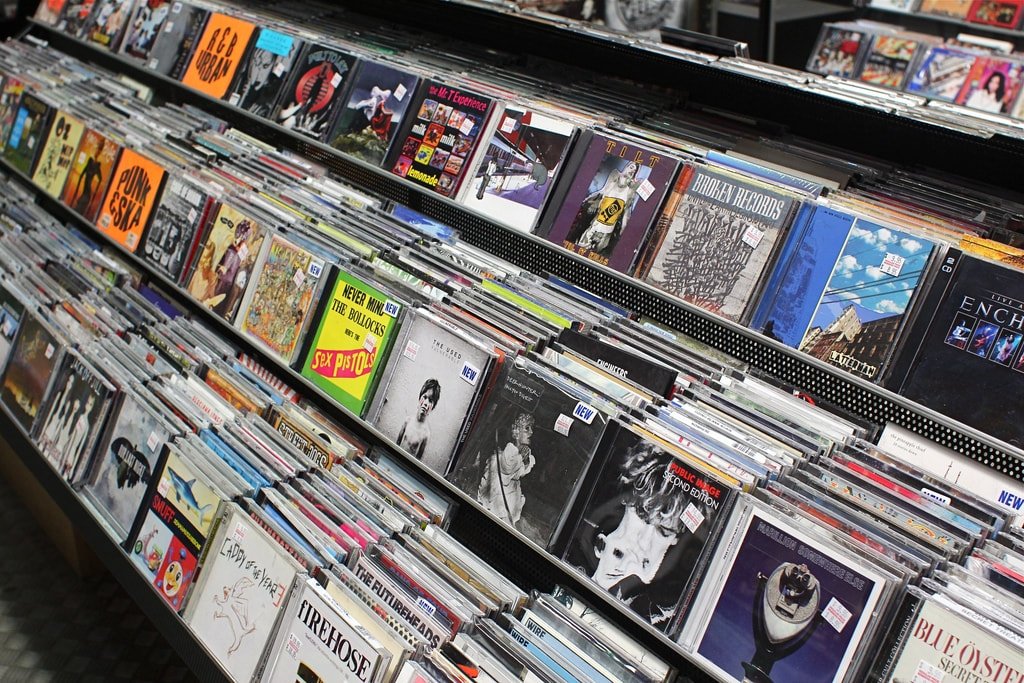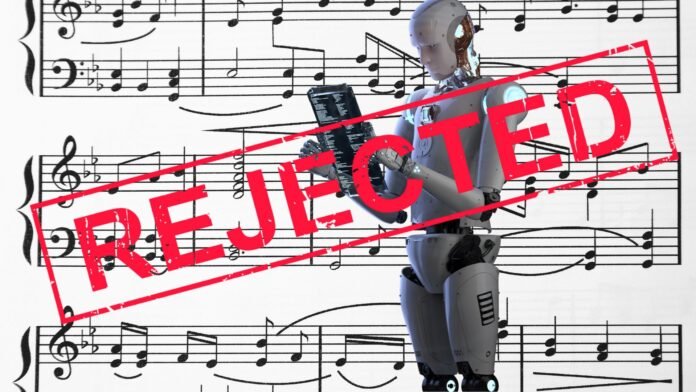I get it — everyone’s freaking out about AI. Musicians, labels, platforms — everyone’s struggling to figure out how to deal with it while keeping music authentic and meaningful.
After years of using SoundCloud to distribute my original music, I was recently rejected with all my recent submissions. Their message to me was clear:
“Our terms of service explicitly prohibit generative AI, and due to this, we’re only able to approve content created with our AI integration partners for distribution or monetization. Please do not resubmit. Thanks.”
Wait… what?
Let’s unpack this.

The Way It Used to Be
I write and compose all my songs — chord progressions, structure, lyrics, everything. Back in the day, I recorded every track myself, mixed it, and mastered it. The process could take anywhere from two to four weeks to complete a single song.
That time investment made sense when selling music actually paid the bills. You could make a CD for a dollar and sell it to distributors for five. There was real money and real reward for the work.
But now? In the streaming era, we’re basically giving music away. Yes, Spotify pays, but those payouts are pennies. With over 100,000 songs uploaded every single day, the odds of your track standing out — and earning anything meaningful — are microscopic.
Investing four weeks of your life into something likely to get buried isn’t just heartbreaking — it’s bad business.

Enter 2025: The Age of AI-Assisted Creation
Fast forward to now. With tools like Suno, I can generate instrument stems that follow my original composition — every chord, every structure, every note — within minutes. These tools don’t replace creativity; they accelerate it.
Instead of spending weeks recording drums, bass, and keyboards, I can now focus on what truly matters — my songwriting, my voice, my artistry.
I re-record my vocals, mix everything in FL Studio, add effects or small tweaks where needed, and in about three to five hours, I have a complete song. That’s not just efficient — it’s survival.
Because let’s face it: I have a family. I can’t justify spending weeks on songs that will vanish into the digital ocean. I still love making music — it’s my art — but it has to make sense in today’s world.
Here’s my “SLOW MO ROSIE” song was rejected by Soundcloud for digital distro. I wrote the song, it’s registered on ASCAP, and that’s me singing the song. I used the stems from SUNO that covered my original track. Then I recorded my vocals and mixed them with additional effects and extra tracks. To me, it’s no different than using EZ Drummer plugin to create the drum track. It just another tool I used. But they don’t see it that way. Everyone is on freak-out mode on…can’t blame them. It’s tough for everyone.
The SoundCloud Roadblock
And now, after doing all that, SoundCloud rejects the track because it includes AI-generated stems — even though I wrote the song, sang it, produced it, and own every part of it.
Sound familiar? We went through this exact fight when digital audio workstations (DAWs) and plugins first arrived. Back then, “real musicians” said it wasn’t authentic to use digital drums or pitch correction. Now, those are just normal tools in every studio.
It feels like déjà vu — a new technology arrives, and the industry panics before eventually embracing it.
Right now, we’re just in the panic phase.
Navigating the Chaos: What Artists Can Do
So what can independent musicians do to survive — and thrive — in this new world?
Here are a few practical ideas:
Be Transparent and Smart About AI Use
If you’re using AI tools like Suno, Udio, or Boomy, disclose it in your metadata. Say something like:
“Written and performed by [Your Name]. Instrumental stems generated using Suno AI.”
Some distributors (like DistroKid, CD Baby, or TuneCore) are fine with that transparency.
Choose the Right Distributor
SoundCloud’s AI ban is strict, but other platforms are adapting faster. Try DistroKid, RouteNote, Amuse, or CD Baby, which allow AI-assisted tracks if you own the rights.
Keep Control of Your Masters
Don’t rely on any one company’s changing policy. Always keep your final mixes, masters, and stems backed up independently.
Leverage AI Responsibly
Use AI to speed up your process, not to replace your artistry. It’s still your melody, your lyrics, your voice — the tech just helps you get there faster.
Engage Your Audience Directly
Use your website, social channels, and email list to build community. Streaming platforms may not value your time — but your fans do.
The Bigger Picture
The truth is, no one knows where this is all going. The rules are being written in real-time, and artists are caught in the middle — again.
But one thing’s for sure: creativity always finds a way. Whether it’s analog tape, DAWs, or AI, the tools may change, but the art remains human.
So as the world turns again, all we can do is stay adaptable, stay authentic, and keep making music — by any means necessary.











